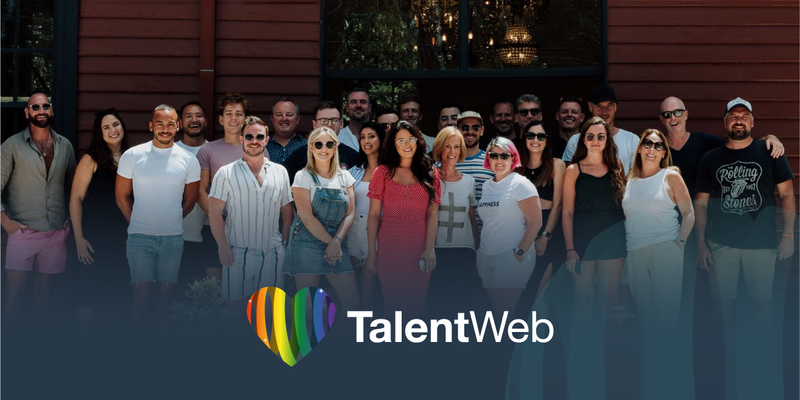
December 14, 2023
A degree of staff turnover is inevitable for every employer. However, high attrition rates often lead to significant costs associated with recruiting and onboarding, as well as a loss of productivity during transitional periods. It’s a pattern we’ve observed in all types of markets, and the current environment is no exception.
Read on to learn how investing in a strong employee retention strategy and employee value proposition can help overcome misalignments of expectations between your organisation’s leadership and teams, leading to more stability and growth.
The Current State of Employee Retention
Job mobility has hit a decade-high at 9.5%, with 2.3 million Australians leaving or losing their jobs in the year ending February 2023. Over half of the employed population has been in their current job for less than five years – indicative of a trend towards more frequent job changes.
What does this mean for your organisation? Although a strong employee retention strategy should take into account the broader trends in job mobility, it’s not just about reacting to these trends.
Understanding the specific needs and aspirations of your workforce is key to crafting an Employee Value Proposition (EVP) that not only responds to the current job market dynamics but also helps build more stable and committed teams for the future.
Factors Affecting Employee Retention
Here are some of the key factors affecting retention as reported by employees:
-
Remuneration & reward: Some 25% of workers have weighted remuneration and reward as what they value most from an employer. To address this, ensure you are offering competitive fixed pay as an absolute minimum. Going further, consider performance-based bonuses, enhanced superannuation contributions, and offering various discounts or lifestyle benefits to employees.
-
Wellbeing: Following closely behind, 22% of employees ranked wellbeing as most important – and 85% of respondents noted that their wellbeing had declined rapidly throughout the pandemic. Employers can address this with practical initiatives that support mental health, promote work-life balance, and encourage wellness.
-
Work-life balance: Closely connected to wellbeing, work-life balance is a key driver of employee retention. Gartner found that work-life balance ranks among the top five factors influencing an employee’s choice to either join or leave a company. Keep a close eye on workloads and how resources are allocated to manage them. Offering flexible work schedules, options for remote work, and paid leave for personal matters are also ways to show your organisation is serious about work-life balance.
-
Leadership: The same Gartner survey revealed manager quality as the number one factor affecting employee retention. Investing in leadership development programs and ensuring managers are equipped to support and engage their teams are essential steps to address this.
-
Career advancement: A common motive for job seekers to look for other opportunities is the feeling of being stuck without opportunities to advance. PWC’s findings showed better training is one of the top three desires of workers. Look for ways to provide professional development and training, promotion opportunities, and mentorship programs.
Considering how each of these factors applies to your organisation will offer insight into what your employees value most in their work and workplace environment. This understanding is crucial as you embark on crafting a bespoke Employee Value Proposition (EVP).
How to Build a Strong EVP
Given the current employee retention trends, a strong EVP has evolved from desirable to essential for every organisation. But how do you go about crafting one? Here are our 4 key steps:
-
Assess: Begin by understanding your current EVP – including how it’s communicated both internally and externally. How are you addressing the key factors that affect employee satisfaction, such as wellbeing, remuneration, and leadership? What are the company’s stated values and policies that relate to employees?
-
Evaluate: The next step is to compare your perceived EVP against the actual perceptions of your employees. Engage in conversations and conduct surveys to uncover precisely what your employees value in their roles and how their experiences align with the company’s EVP. This process should analyse any discrepancies, pinpointing areas where the business is falling short of employee expectations. Gathering exit survey data can be particularly helpful in understanding turnover and retention trends. According to an Australian HR Institute report, 83% of organisations use employee exit interviews for this purpose.
-
Plan & Adapt: Armed with the knowledge of the gaps between your assessed EVP and your employees’ evaluations, it’s important to adjust your EVP to respond effectively. Consider how different aspects of your EVP, such as new initiatives, can make your organisation more appealing to your current employees.
-
EVP as a Continuous Journey: Remember that an EVP should never be static – this process should be continual and responsive to regular feedback and market analysis. Regularly updating your EVP to reflect the changing landscape and workforce needs will mean you stay ahead of the curve – and ultimately lead to stable, long-term business success.
Further Support with Employee Retention
That covers our top staff retention tips for 2023, from understanding the key factors impacting employee satisfaction to building a strong EVP. For more advice on how to align candidate motivations with your EVP, read our insights here.
As one of the leading specialist recruitment agencies across Australia, we understand the complexities of managing teams and the best strategies to increase employee retention. For help crafting the best EVP for your organisation, please don’t hesitate to contact us.












